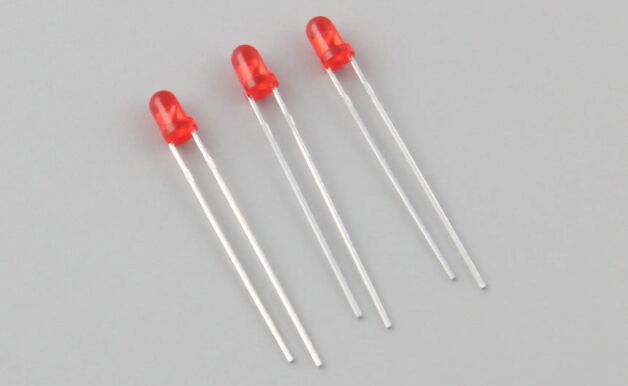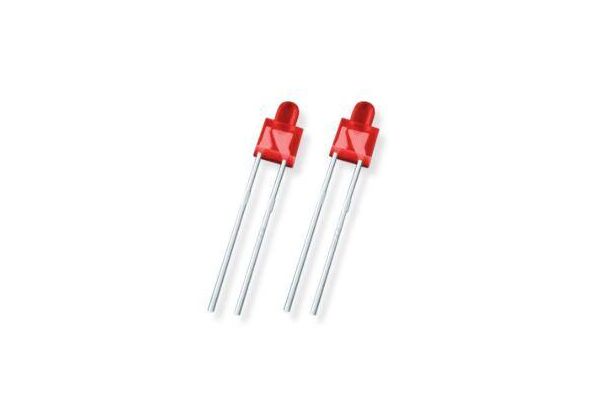By ON Semiconductor 134
Diode is one of the earliest semiconductor devices, and its application is very wide. Especially in various electronic circuits, the use of diodes and resistors, capacitors, inductors and other components for reasonable connection to form circuits with different functions can realize rectification of alternating current, detection of modulation signals, amplitude limiting and clamping, and control of power supplies. Voltage regulation and other functions.diodes in electronics

The nonlinear current-voltage characteristics of semiconductor diodes can be changed by selecting different semiconductor materials and doping different impurities to form impurity semiconductors. In addition to being used as a switch, the diode with changed characteristics has many other functions, such as: limiting high voltage to protect the circuit, generating radio frequency oscillation, generating light, and adjusting voltage.
Ⅰ. Application fields of diodes
Diodes are widely used in various fields, such as:
1. Solar Cell: A solar cell is essentially a special type of diode that converts light energy directly into electricity. They are widely used in solar power systems and renewable energy fields.diodes in parallel
2. Temperature sensor: For example, a temperature compensation diode (for example, a reference diode) can be used as a temperature sensor. Its voltage is linear with temperature and can be used to measure and compensate for temperature changes in circuits.
3. Laser diode: A laser diode (LD) is a special type of diode that produces a laser beam. They are widely used in fields such as laser printing, optical communication, laser cutting and medical equipment.
4. Rectifier: The most basic application of a diode is as a rectifier, converting alternating current to direct current.
5. Communication and telecommunications: Diodes play an important role in the field of communication and telecommunications. For example, they are used as high frequency modulators and demodulators, radio frequency switches, microwave transmitters and receivers, etc.
6. Power management: Diodes are used in power management circuits, such as reverse battery protection, power selection, battery charge and discharge protection, etc.
7. Detection: The main function of the detection diode is to detect the low frequency signal in the high frequency signal. Their structure is point contact type. Its junction capacitance is small and its operating frequency is high, and it is generally made of germanium.
8. Limiting: It plays a role of freewheeling in the inductance of the switching power supply and inductive loads such as relays.
Ⅱ. Types of diodes
1. Classification by application and characteristics:
Light-emitting diodes (LEDs): There are infrared diodes, visible light diodes of various colors, and ultraviolet diodes from the types and characteristics of light emission.diodes in series
PN junction diode: Apply forward bias and use the rectification properties of PN junction in semiconductors. It is the most basic semiconductor diode. It is commonly used in rectification and in parallel with inductors to protect other devices.
Zener diode: When a reverse bias is applied, the reverse breakdown voltage that occurs when a certain voltage is exceeded changes little with the reverse current, and has a certain voltage stability capability.
Laser diode: When the light produced by the LED is coherent light with a very narrow bandwidth, it is called a laser diode.
Geometric Diodes: Using Nanoscale Geometric Structures to Achieve Properties. It is expected to be applied to fields that require extremely high-speed rectification [14], such as optical rectennas, to realize the function of converting visible light or infrared rays into direct current.
Varactor diode: When reverse bias is applied, the thickness of the depletion layer of the PN junction of the diode will change due to different voltages, resulting in a change in electrostatic capacitance (junction capacitance), which can be used as a variable capacitor controlled by voltage.
2. Classified by material and development period:
GaAs Diodes, Vacuum Diodes, Selenium Diodes, Selenium Diodes, Silicon Diodes
Ⅲ. Working principle of diode
A crystal diode is a PN junction formed by a P-type semiconductor and an N-type semiconductor, and a space charge layer is formed on both sides of the interface, and a self-built electric field is built. In P-type semiconductors, the doping of impurity atoms results in a large number of holes (positive charges) in the semiconductor material. In N-type semiconductors, the doping of impurity atoms results in a large number of free electrons (negative charges) in the semiconductor material.
Ⅳ. Working characteristics of diode
1. Forward Voltage Drop: Under forward bias, a diode has a forward voltage drop. The forward voltage drop refers to the voltage drop caused by the potential barrier inside the PN junction when the current in the diode passes.
2. Reverse breakdown: When the reverse voltage exceeds the reverse breakdown voltage of the diode, a large amount of current will pass through the diode even under reverse bias.
3. Semiconductor characteristics: The characteristics of semiconductors make diodes between conductors and insulators in terms of conductivity, and have the ability to resist and conduct electricity.

Frequently Asked Questions
1. What does the symbol and pinout of the diode look like?
The symbol for a diode usually consists of a triangle followed by a horizontal line. The horizontal line connects to one side of the triangle, representing the positive end, while the triangle represents the negative end. The arrow between the horizontal line and the triangle points to the negative terminal (cathode), indicating the direction of current flow. Axial Lead: In this arrangement, the leads of the diode are located at both ends of the component, arranged in a straight line. Connect one end to the anode and the other end to the cathode. SMD: The pins of surface mount diodes are planar and located on the bottom of the component. They are usually marked to indicate anode and cathode.
2. How does the temperature of a diode affect its performance?
Reverse leakage current: An increase in temperature will increase the reverse leakage current of the PN junction. Reverse leakage current is the tiny amount of current that flows through a diode when it is reverse biased. As the temperature increases, the potential barrier of the PN junction decreases, resulting in an increase in reverse leakage current.
Leading Characteristics: An increase in temperature will affect the conduction characteristics of the diode. Generally speaking, as the temperature increases, the resistance of the conductor material will increase, resulting in a decrease in the conduction capability of the diode.
Reliability: An increase in temperature will affect the reliability of the diode. High temperatures may cause problems such as material aging, electromigration, and failure of metal connections, thereby reducing the lifetime and reliability of the diode.
Temperature drift: Changes in temperature can also cause drift in the parameters of the diode. For example, temperature changes may cause changes in parameters such as the cut-off frequency, turn-on voltage, and current amplification of the diode.